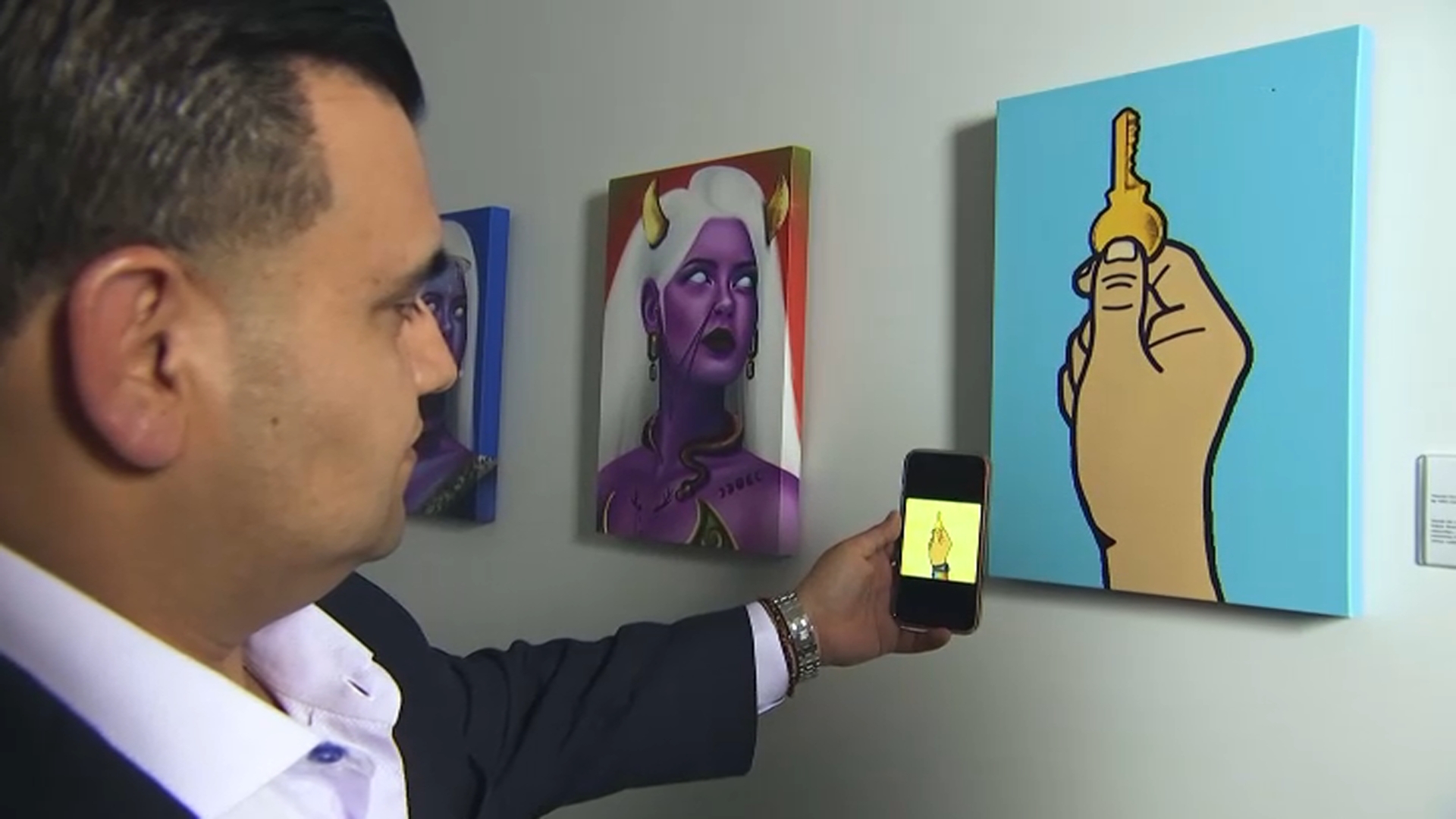NFTs, or non-fungible tokens, are drawing a lot of attention among artists. But what exactly are they and what are the ups and downs for artists and buyers?
NFTs are basically digital assets that cannot be replicated or reproduced. They exist on a blockchain system – a space people usually associate with cryptocurrency. But artists are now working with the concept to create physical pieces that accompany those assets, creating an investment that is also a piece of artwork.
Harvard Business School Professor Marco DiMaggio developed the business school’s first ever fin-tech class. He suggests thinking of NFTs as collectibles for the digital generation.
“There is so much excitement also because there are many artists that want to issue NFTs,” he said.
Among those artists are the famous British artist Damien Hirst, who dropped “The Currency,” an NFT collection of 10,000 unique pieces. Buyers have six months to choose whether they want the digital NFT or the physical piece. The other gets burned.
“So the NFT records, who owns what. And so every time you are going to sell, the NFT is going to record on the blockchain,” DiMaggio explained.
Think of the blockchain as a digital database ledger that records transactions in a verifiable and permanent way.
In-depth news coverage of the Greater Boston Area.
“You might say that for every additional transaction in the secondary market of this particular artwork, a portion of it will need to go to the artist,” he added. “It’s really collecting information. And so, you know, the history of the piece of art. And so, you know for sure that you are not buying a counterfeit or somebody that has stolen the piece of art.”
That ability to track the sales over time is appealing to newer artists who are hoping to make it big.
“This one is Psychedelic Bloom Blossoms….. it’s like a trippy type animation video,” explained artist Mr. Flo Sunday.
Sunday said selling NFT versions of his art gives him direct access to customers without having to pay a gallery commission. If he ever gets famous one day, he can continue to reap royalties on the resale value.
“It kind of gave artists more advantage on like they could like set setting their terms.”
But buying NFTs with cryptocurrency is not risk free.
“In the primary market, when the art is the issue, the NFT prices are extremely high. But then there isn’t a lot of liquidity in the secondary market, meaning that if you then wanted to sell and realize gains, it will be extremely difficult,” DiMaggio said.
Still, real estate brokers like Jorge Sariego and Noah Kollar are interested in selling NFTs at work. At Boston Realty Group you can purchase a physical work of art and that one-of-a-kind digital version.
“The long term goal is basically generational wealth,” Sariego said.
DiMaggio said you should expect to see more regulation.
“You need regulation because there are many people that are on the sidelines that are looking into this space, but they feel like they are in the gray area and it’s not really clear what is allowed, what is not, or they are afraid of scammers and fraudsters. And so providing some regulation will also provide some stamp of approval,” he said.
DiMaggio offered some websites to learn more about the basics of crypto, blockchain and NFTs: coinbase.com/learn and academy.binance.com/en/start-here.

